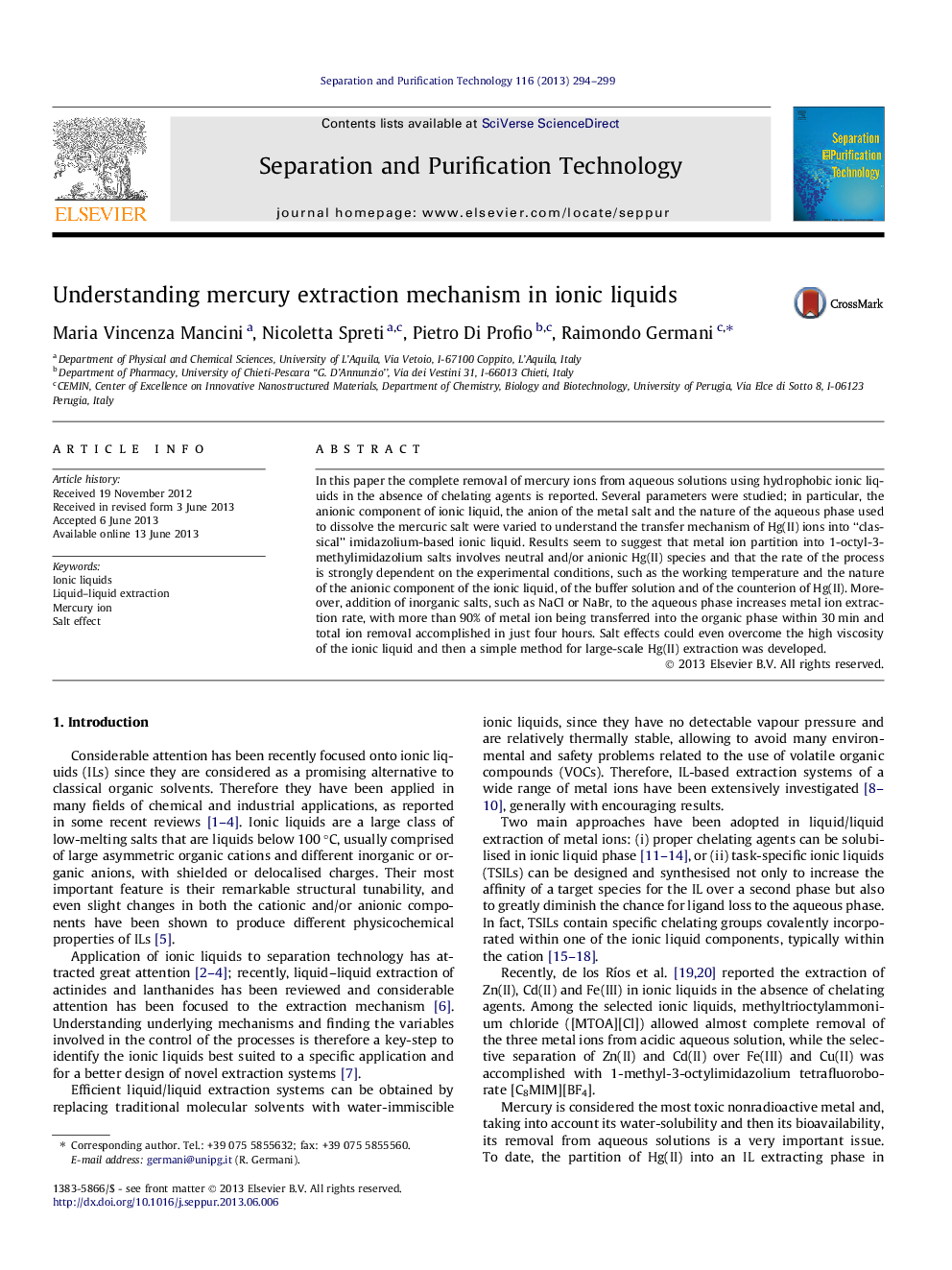| کد مقاله | کد نشریه | سال انتشار | مقاله انگلیسی | نسخه تمام متن |
|---|---|---|---|---|
| 641662 | 1457003 | 2013 | 6 صفحه PDF | دانلود رایگان |

• A simple method for large-scale extraction of mercury was developed.
• “Classical” hydrophobic ionic liquids as extracting agents for mercury ions.
• The rate of the process depended on experimental conditions.
• The transfer mechanism of mercuric ions has been suggested.
• Different forms of mercury are involved in the transfer process.
In this paper the complete removal of mercury ions from aqueous solutions using hydrophobic ionic liquids in the absence of chelating agents is reported. Several parameters were studied; in particular, the anionic component of ionic liquid, the anion of the metal salt and the nature of the aqueous phase used to dissolve the mercuric salt were varied to understand the transfer mechanism of Hg(II) ions into “classical” imidazolium-based ionic liquid. Results seem to suggest that metal ion partition into 1-octyl-3-methylimidazolium salts involves neutral and/or anionic Hg(II) species and that the rate of the process is strongly dependent on the experimental conditions, such as the working temperature and the nature of the anionic component of the ionic liquid, of the buffer solution and of the counterion of Hg(II). Moreover, addition of inorganic salts, such as NaCl or NaBr, to the aqueous phase increases metal ion extraction rate, with more than 90% of metal ion being transferred into the organic phase within 30 min and total ion removal accomplished in just four hours. Salt effects could even overcome the high viscosity of the ionic liquid and then a simple method for large-scale Hg(II) extraction was developed.
Figure optionsDownload as PowerPoint slide
Journal: Separation and Purification Technology - Volume 116, 15 September 2013, Pages 294–299